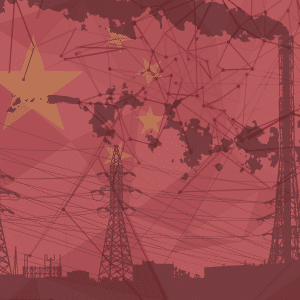On April 29, 2025, the Plattform Industrie 4.0 Österreich hosted a Research Insight event titled “China’s Standardization Strategy and Digital Future Technologies.” More than 30 participants attended the presentation of a study commissioned by the Austrian Chamber of Labour (AK), delivered by its author Doris Vogl. In her talk, Vogl outlined the challenges and implications of China’s standardization policy for Europe.
Standardization as a Geopolitical Tool
From the outset, it became clear that China’s standardization policy represents a strategically relevant field of action for European standards organizations, companies, and regulatory authorities. Vogl illustrated how China is acting increasingly proactively on the international stage — for example, through geopolitical initiatives like the Belt and Road Initiative. In this context, technical standards are not merely accompanying elements but are deliberately used as integral components of trade agreements — often to the benefit of Chinese companies and potentially creating market access barriers for European stakeholders.
Vogl noted that she deliberately avoids making a strict distinction between norms, standards, and specifications in her analysis, as primary Chinese sources — and many English-language publications from Chinese authors — typically use the term “technical standards” uniformly and imprecisely.
Different Approaches to Standardization: China vs. Europe
Vogl began by comparing the normative infrastructures of both regions. Since 2020, China has offered free access to national standards via a state-run online platform — even for foreign companies. In contrast, access to European standards often remains restricted. While a 2021 European Court of Justice ruling paved the way for free access in certain cases, Europe’s system remains more fragmented due to copyright protections and federal structures. Meanwhile, it became evident that China — in light of its increasing technological leadership in areas such as green technologies — is shifting toward keeping strategically relevant knowledge confidential for longer. Thus, the ambition to lead technologically forces the country into a defensive stance at the same time.
From “Made in China 2025” to “China Standards 2035”
In the second part of the presentation, a look back at recent years highlighted how closely China’s industrial and standardization strategies are interwoven. From the industrial initiative Made in China 2025 to the follow-up program China Standards 2035 and the National Standardization Development Outline published in 2021, China is pursuing a long-term goal: not only to become a global technology leader but also to set international standards itself. One quote from the strategy makes this ambition clear:
“First-class companies do standards, second-tier companies do technology, third-tier companies do products.”
Five-Year Plans and Strategic Industries
In the context of the outgoing 14th Five-Year Plan and the preparations for the 15th, it became clear which future industries are currently being promoted by the Chinese government — including the Internet of Things, smart cities, AI-based mobility solutions, virtual reality, quantum technologies, and the so-called “low-altitude economy.” Internal party structures within companies help ensure the consistent implementation of political objectives.
A striking detail mentioned in passing: The introduction of the term “new quality productive forces,” presented in March 2024 at the National People’s Congress, shows an effort to adapt Marxist economic categories to current technological developments. These “new productive forces” are defined — in contrast to traditional productive forces like labor, resources, and capital — as cutting-edge technologies, high efficiency, and premium quality. One may well ask: What happens when a technocracy — already adept at defining strategic goals and following through with them — also masters the art of agility?
Discussion and Outlook
China’s standardization policy proves to be a geopolitical instrument with wide-ranging implications for the economy, politics, and science in Europe. In the closing discussion, concerns were raised about the imbalance between China’s growing influence in international standardization bodies (such as ISO, IEC, ITU) and the comparatively limited engagement of European actors. Doris Vogl advocated for the long-term, targeted deployment of European experts to these bodies. She also emphasized the importance of stronger collaboration between established companies and innovative start-ups, given that European political institutions may continue to refrain from intervening to the same extent as Chinese state actors — who do so both routinely and assertively.
Doris Vogl’s study is freely available for download here:
China’s Standardization Strategy and Digital Future Technologies
Note: The information processing (transcription and summary) was carried out with the assistance of AI.
The final version was manually reviewed and editorially revised.
